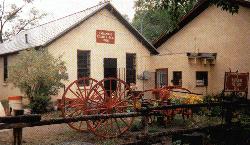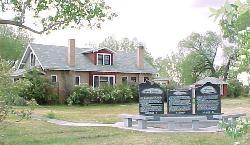| The land around Saguache (pronounced sah-WATCH) has been inhabited for thousands of years - first by unnamed nomads, later by the Utes (who camped here seasonally), and later still by Mexican traders bound for California on the Old Spanish Trail. Hispano farmers first settled the area in the early 1860s, followed by Anglos after the Civil War. By 1874, the year of its formal incorporation, Saguache anchored one of Colorado's most important agricultural regions, supplying the mining camps of the Arkansas Valley and the San Juan Mountains. Despite its prosperity and county - seat status, however, the town never obtained the railroad access that would have enabled it to grow. It nonetheless evolved into a leading cattle center and remains the county seat. Saguache today is one of Colorado's deepest - rooted towns, with ranches worked continuously since the late 1800s. |
John Lawrence and Otto Mears were both orphans, then soldiers, then Colorado pioneers - and both were instrumental in founding Saguache. Mears, a tireless enterpriser, bolstered local agriculture with his mills and wagon roads; although those highways eventually carried him away, his gifts to Saguache were enduring. The same was true of Lawrence, who gave the community his life as well as his work. He helped establish Saguache County and served it in various capacities (including state assemblyman), but it was through quieter gestures - loaning money, employing the jobless, nurturing schools and churches - that he earned the respect and friendship of the people. Among these (largely Hispano) ranchers and farmers, Lawrence found the family he'd never had. When he died in 1908, his tombstone was inscribed simply: “The Founder of Saguache County Colorado 1835-1909.” |
|
|
|
Hazard House Museum
Hwy 285, Saguache |
|

click on map above for enlargement in new window
|
|







